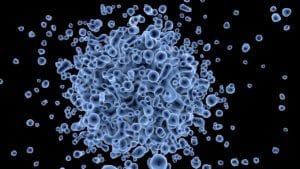Welcome to the Rare Classroom, a new series from Patient Worthy. Rare Classroom is designed for the curious reader who wants to get informed on some of the rarest, most mysterious diseases and conditions. There are thousands of rare diseases out there, but only a very small number of them have viable treatments and regularly make the news. This series is an opportunity to learn the basics about some of the diseases that almost no one hears much about or that we otherwise haven’t been able to report on very often.
Eyes front and ears open. Class is now in session.

The disease that we will be learning about today is:
Severe Combined Immunodeficiency
Sometimes called Swiss-type agammaglobulinemia or bubble boy disease.
What is Severe Combined Immunodeficiency?
- Severe combined immunodeficiency (SCID) is a rare genetic disorder defined by inhibited development of T-cells and B-cells
- There are several different disorders that fall under the category of SCID, which are defined by which mutation is the cause
- Both ‘arms’ of the adaptive immune system are impaired in function
- The degree of immunodeficiency is more profound than other forms of primary immunodeficiency and can be regarded as effectively absent altogether
- David Vetter, born in 1971, dubbed ‘bubble boy,’ gained notoriety in the media at the time for living with the disease and using a highly specialized, sterile containment unit as part of his treatment. He ultimately died from complications of SCID after a failed bone marrow transplant
- Severe infections occur early in life
- Prevalence of severe combined immunodeficiency isn’t entirely clear but may be as high as 1 in 50,000 births
- All 50 US states screen for the disorder as part of newborn screening panels
- Otherwise, diagnosis can be difficult due to the need for advanced testing
How Do You Get It?
- There are at least nine known genes in which mutations can lead to the development of a form of severe combined immunodeficiency
- The most common type is X-linked, which is linked to mutations of the IL2RG gene
What Are the Symptoms?
- Severe combined immunodeficiency can result in the following symptoms, such as:
- Severe fungal, viral, and bacterial infections very early in life
- Failure to thrive
- Interstitial lung disease
- Chronic diarrhea
- Profuse oral candidiasis, a fungal infection
- Pneumonia
- Ear infections
How Is It Treated?
- Bone marrow transplant is the most common treatment for severe combined immunodeficiency
- Matched and half-matched donors can be used, but immune system development in the patient takes longer with a half-match
- Transplants conducted in the first three months of life have the greatest chance of success
- Transplants using cord blood, and even in-utero transplants, can also be effective
- Gene therapy has been attempted to treat the disorder, and may become a viable approach in the future
- Isolation in a sterile environment and enzyme replacement therapy with polyethyleneglycol-coupled adenosine deaminase (for patients with the adenosine deaminase deficiency form) are examples of non-curative options
- Without treatment, patients usually die within their first year
Where Can I Learn More???
- Check out our cornerstone on this disease here.
- Learn more about severe combined immunodeficiency from the Immune Deficiency Foundation.








